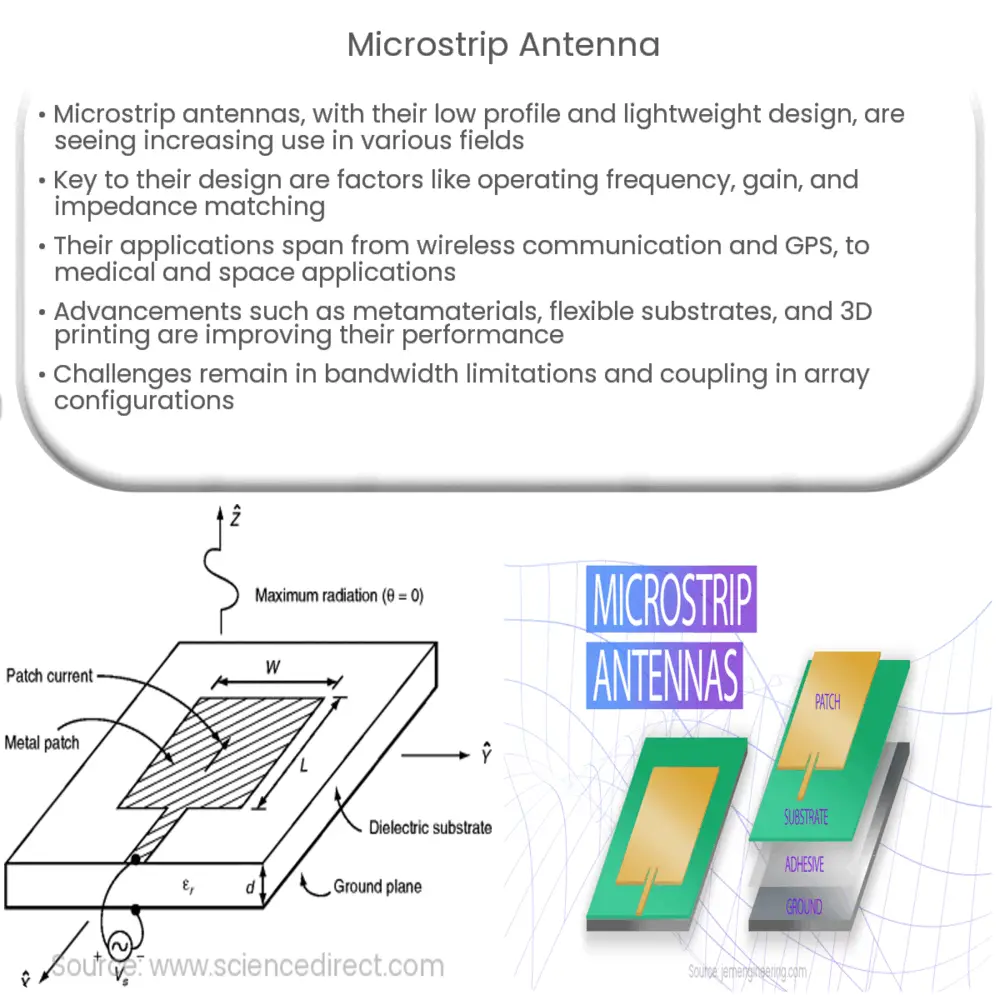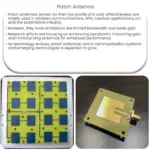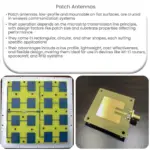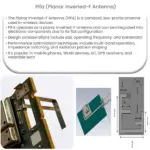Microstrip antennas are low-profile, lightweight, and compatible with integrated circuits, widely used in wireless communication, GPS, and medical applications.

Microstrip Antenna: Design, Applications, and Advancements
Introduction
Microstrip antennas, also known as patch antennas, have become increasingly popular in recent years due to their low profile, lightweight, and compatibility with integrated circuits. These antennas consist of a radiating patch on one side of a dielectric substrate and a ground plane on the other side. The radiating patch is typically made from a conducting material such as copper or gold, while the substrate is made from a dielectric material with a specific permittivity. In this article, we discuss the design principles, applications, and recent advancements in microstrip antenna technology.
Design Principles
The design of a microstrip antenna is primarily influenced by the operating frequency, gain, polarization, and impedance matching. The dimensions of the radiating patch determine the operating frequency and can be calculated using various methods, such as the transmission line model or the cavity model. The shape of the patch also plays a crucial role in determining the radiation pattern and polarization of the antenna. Common patch shapes include rectangular, circular, and triangular, each with its own unique advantages and trade-offs.
Impedance matching is essential for efficient energy transfer between the antenna and the connected transmission line. In microstrip antennas, impedance matching can be achieved using techniques such as quarter-wave transformers, stubs, or inset feeding. The substrate material and thickness also influence the antenna’s performance, with a thinner substrate offering wider bandwidths and higher efficiency.
Applications
Microstrip antennas have found numerous applications across various industries due to their low profile and ease of integration. Some of the most prominent applications include:
- Wireless Communication: Microstrip antennas are extensively used in mobile phones, Wi-Fi routers, and other wireless devices due to their low cost, compact size, and compatibility with printed circuit boards.
- Global Positioning System (GPS): The lightweight and conformable nature of microstrip antennas make them ideal for use in GPS receivers, enabling accurate positioning and navigation.
- Medical Applications: Microstrip antennas are used in medical devices such as implantable antennas for in-body communication and monitoring, as well as microwave imaging systems for cancer detection.
- Space and Satellite Applications: The low weight and small form factor of microstrip antennas make them suitable for use in satellite communication systems and space probes.
Recent Advancements
Recent advancements in microstrip antenna technology have led to improved performance and new capabilities. Some of these advancements include:
- Metamaterials: The incorporation of metamaterials in microstrip antennas enables novel radiation properties and increased bandwidth, opening up possibilities for new applications and improved performance.
- Flexible Substrates: The development of flexible dielectric substrates has made it possible to create conformal microstrip antennas, which can be wrapped around curved surfaces and easily integrated into various devices.
- 3D Printing: 3D printing technology has allowed for the rapid prototyping and customization of microstrip antennas, enabling designers to create complex structures and optimize antenna performance for specific applications.
Reconfigurable Antennas
Reconfigurable microstrip antennas have emerged as a promising solution for addressing the growing demand for multi-band and multi-functional wireless communication systems. These antennas can dynamically alter their radiation properties, such as frequency, polarization, and beam direction, in response to changing system requirements. Reconfigurability can be achieved using various techniques, including incorporating tunable materials, using reconfigurable feed networks, or integrating RF switches and varactors into the antenna design.
Array Antennas
Microstrip array antennas combine multiple radiating elements to form a single, more powerful antenna system. This configuration can enhance the overall gain and directivity of the antenna, enabling it to focus the transmitted or received energy in a specific direction. Microstrip array antennas are particularly useful in applications that require high gain and directivity, such as radar systems, satellite communications, and wireless infrastructure.
Challenges and Future Directions
Despite the numerous advantages and advancements in microstrip antenna technology, some challenges still need to be addressed. One of the primary limitations of microstrip antennas is their inherently narrow bandwidth, which can restrict their applicability in wideband communication systems. Researchers are continuously exploring novel techniques and materials to improve the bandwidth performance of microstrip antennas.
Another challenge is the mutual coupling between closely spaced radiating elements, particularly in array configurations. This coupling can lead to degraded performance and increased complexity in impedance matching. Advanced design techniques, such as incorporating decoupling structures and optimizing element spacing, are being investigated to mitigate these issues.
As the demand for versatile, compact, and high-performance wireless communication systems continues to grow, microstrip antenna technology is expected to play a crucial role in enabling these systems. Future research directions may include the exploration of new materials and fabrication techniques, the development of advanced reconfigurable and array antenna designs, and the integration of microstrip antennas with other emerging technologies, such as 5G and 6G communication systems, and the Internet of Things (IoT).
Conclusion
Microstrip antennas have come a long way since their inception, becoming an integral part of many modern wireless communication systems. Their low profile, lightweight, and compatibility with integrated circuits have opened up numerous application possibilities across various industries. With ongoing advancements in materials, design techniques, and fabrication methods, microstrip antennas are poised to play an even more significant role in the future of wireless communication and beyond.




